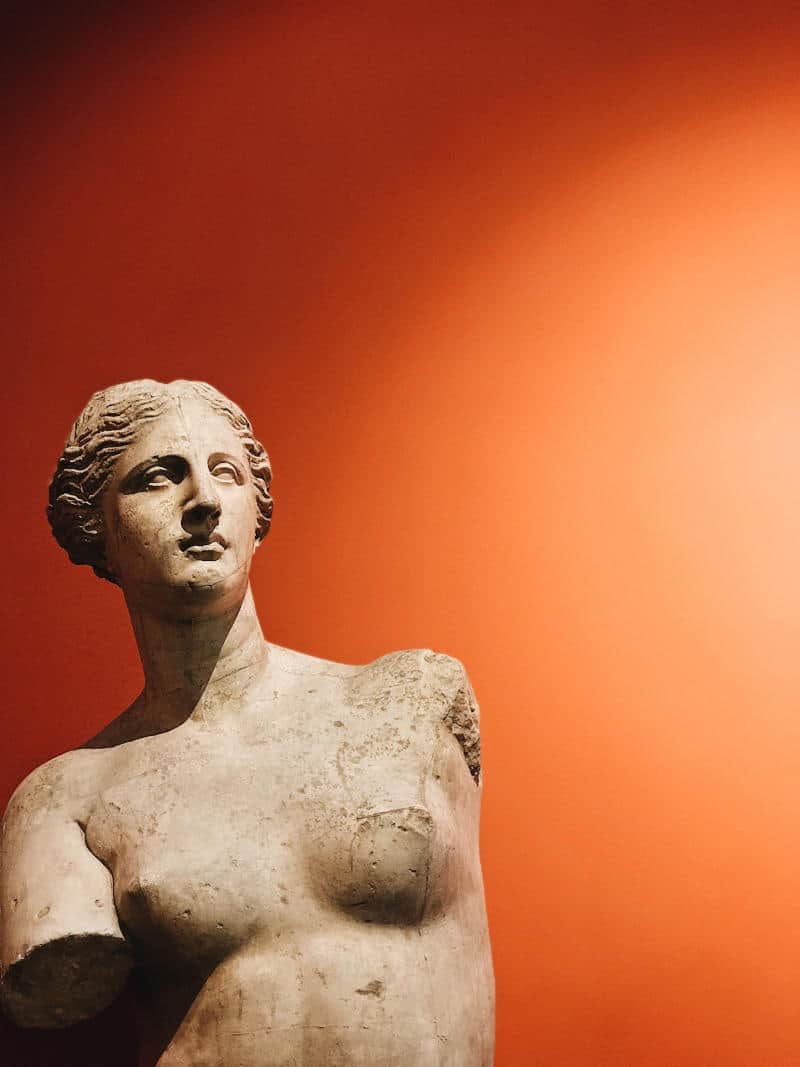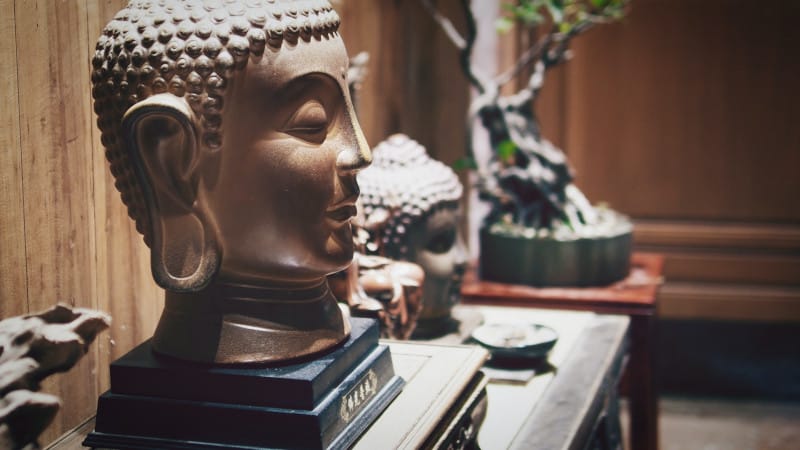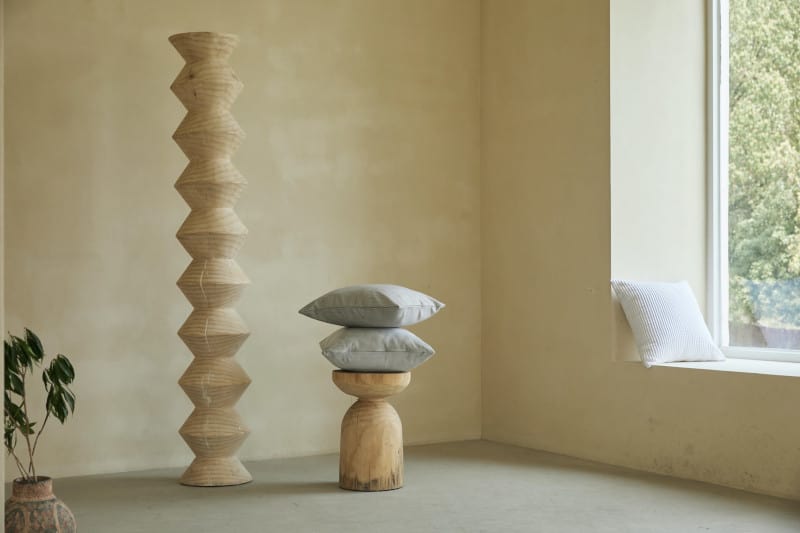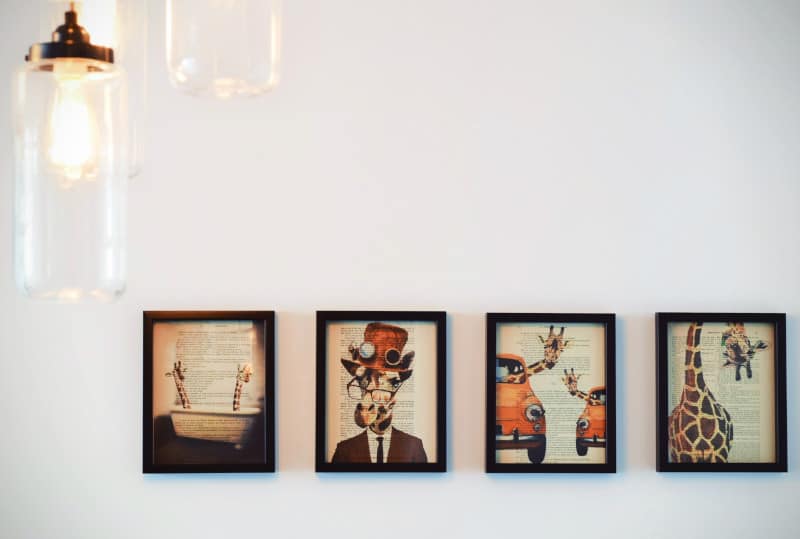It’s prime vacation season, and common conversation clients have with us post-trip is one you may relate to. While they’ve been on a trip of a lifetime, they’ve discovered an amazing artist whose work they’ve fallen in love with. They are so enamoured with it, that they’ve brought a piece home to enjoy. Now the challenge becomes: where will the piece go? Don’t stress – we have some tips to help you before your next trip!
Collectors of art and memorabilia are passionate about their finds and rightfully want to display and store them in a way that brings joy and maintains their value. When we’re remodeling a home, we’re often challenged with the unique properties of each collection and how best to incorporate it into one’s space. Whether it’s fine art acquired on a European vacation, family antiques, or baseball cards, collectors heavily invest in their treasures and showcasing and preserving them is equally important to them — and us!
Another challenge is that a serious collector may have more items than he or she can or wants to display at any one time. So in addition to incorporating display areas, there must also be adequate and safe storage for when pieces are out of rotation.
Displaying Treasured Items
For those who enjoy collecting art, whether it’s sculptures, paintings, ceramics, crafts, etc, there can be factors to consider when creating the perfect space in your home to feature your collection. Not only are we creating the perfect space to display, we also need to accommodate a safe and secure space where your investment maintains its original grandeur and value.
Read on for four helpful tips related to planning for a growing art collection in your home because the last thing you want to experience is a scenario like this one shared by an anonymous art collector seeking advice:
1: Tour Your Home
If you’re in the beginning stages of art collecting, try to “tour” your home as if you’re walking through it for the first time. Yes. This means carrying your phone and a tape measure with you. Granted, if you’ve been living in your house for a while, seeing it with fresh eyes can present a unique challenge. But for this exercise, imagine your rooms, walls, and display nooks or niches as empty or in need of some character.
You should also consider security. Are your art pieces very valuable or fragile and prone to breakage? Do they need to be locked in a cabinet or displayed behind glass? Or perhaps positioned so that the average person, child, or pet cannot reach it?
Obviously, a painting takes up a different kind of space than a statue does, so consider the diversity of your collection. Take photos and track the dimensions of potential “landing spots” for the various types of art you have begun (or plan) to collect.
This exercise is also helpful in remembering where you currently display a growing collection. By saving these photos on Google or any other cloud-based server, you can avoid misremembering the pieces you have as well as the available spaces for the next addition.
You can also avoid making purchases that are too similar, or if you’re inclined to rotate similar pieces, you can easily determine whether that terra-cotta bowl would look out of place next to that etched stone goblet.
Finally, when walking through your home, beyond considering the general aesthetics, ask yourself: What is the maximum set of eyes that might see a piece in that specific location and how will it be perceived in my home differently than it was in the gallery?

2: Pay Attention to Lighting
Pay attention to lighting—both natural and manufactured. During your walkthrough, jot down where direct sunlight hits an area at any time of day because certain pieces are more susceptible to fading—especially textiles or anything made with natural dyes.
Note how the lighting enters the space. For example, would only top-third of a tall vertical piece be in the light but not the bottom? Or, in the case of an item that might be enhanced by natural light, is a portion or a corner of that room awash with sunlight for longer periods of time than another section of the room?
Lighting also matters if you intend to renovate to accommodate a growing collection. The right amount of illumination can highlight ornate details or add clarity that would otherwise be diminished in the shadows. Many works of art are dramatically improved when seen under the correct light at the best angle.
Also, consider the type of light. Some pieces may be seen to a great dramatic effect in lower light. Do you want a dimmer on the light switch? Do you want fixtures on the ceiling that look like spotlights or something far more subtle like mini-balloon LEDs? Do you want to be able to move and adjust the fixtures, or would you prefer them to be stationary?

3: Art Storage
Art storage isn’t like the other storage issues homeowners face. While day-to-day storage of additional things in the attic or closets are easy, art storage is not due to the high value of the raw materials they’re accruing.
When it comes to art storage, there are three major concerns that must be addressed:
- Temperature
- Humidity
- Light
The problem of light was partially addressed in Tip #2. Obviously, the damage that UV rays can do to pigment or to a canvas requires art collectors to find spaces that avoid direct sunlight, but even filtered light can cause problems.
When storing your art, you want the least exposure to light as possible, and even in a room with no access to sunlight, it would be wise to encase all paintings, photos, drawings, or any other work done on paper under UV blocking plexiglass.
Similar to lighting, heat, and humidity can wreak havoc on the integrity of your treasures. According to the Philadelphia Museum of Art, furniture, paintings, textiles, and objects should be stored between 68-72% and have a relative humidity of 45-55%. If these parameters are not met, the exposure can cause warping, corrosion, fading, loss of surface material, mold growth, and more.
The temperature and humidity of a space can be controlled by several different types of HVAC systems, and hydrometers can provide an accurate reading of the humidity in a room. Additionally, air blowers, standup fans, and blackout curtains are useful strategies to ensure the storage space atmosphere is conducive to maintaining the vitality and quality of your collection.
Lastly, for documents, drawings, or paintings that aren’t framed, purchasing solander boxes, art storage cabinets, or vertical art cases are a great way to secure your most valuable works—especially if you’re prone to rotate them seasonally.
Just remember to keep these pieces separated. By placing conservation matboard between items, you can avoid unwelcome chemical reactions between paintings, as well as the buildup of mildew, or accidental folds and wrinkles.

4: Adding to Your Art Collection
If you’re traveling or shopping with the intention of adding to your art collection, bring paint samples or a piece of fabric with you.
A photo (or your memory) alone may not be as accurate as having samples of the exact color of the room—or the patterns of other items in the room— with you as you contemplate an acquisition. This is especially true if you have a favorite artist you hope to commission for a piece. They might ask about color schemes, about where the work will be featured, and about other pieces in the room to ensure an aesthetically pleasing addition to the collection.
Beyond colors and patterns, you’ll also want to be sure that the finishes don’t clash. For example, always consider the material from which a work of art will be comprised.
- Is it metal? If so…what kind? Bronze? Iron? Gold?
- Is it an item forged from rustic materials—intended to look ancient? Or is it an innovative, futuristic work of art?
- If it’s a painting, what kind of frame will look best on the wall you’ve chosen? Do you prefer something glamorous—something baroque with embossed gold? Or maybe you’re putting the piece in the entertainment room where you have contemporary furniture and you believe a subdued, matted black frame will work best?
Essentially, you’re determining how your next purchase will fit not only when paired with other decor in the same space but also in comparison to the other finishes in the room such as the floor, the windows, and the furniture.
It can be thrilling to collect art or memorabilia. Some of our favorite pieces (and our best-related stories) happen unpredictably—when we discover an item we didn’t even know we were looking for. However, with some initial planning, you can ease the potential anxiety of buyer’s remorse and concerns about storing art and valuable collections. You might even be able to hunt down the perfect purchase the next time you find yourself unexpectedly browsing an art gallery, flea market, or antique store.
Laura Davis is a registered architect and interior designer in the state of Texas and Colorado, and a founding member of hpd architecture + interiors. Laura's extensive experience includes residential as well as commercial and retail projects. She also has a particular interest in restoration, holding a certificate in Historic Preservation. She is energized by the character of older homes and the stories of those who have lived there. Responding to the needs of the current owner, while also honoring the personality of the original home is a delicate process to be enjoyed.
Laura Davis is a registered architect and interior designer in the state of Texas and Colorado, and a founding member of hpd architecture + interiors. Laura's extensive experience includes residential as well as commercial and retail projects. She also has a particular interest in restoration, holding a certificate in Historic Preservation. She is energized by the character of older homes and the stories of those who have lived there. Responding to the needs of the current owner, while also honoring the personality of the original home is a delicate process to be enjoyed.


0 Comments